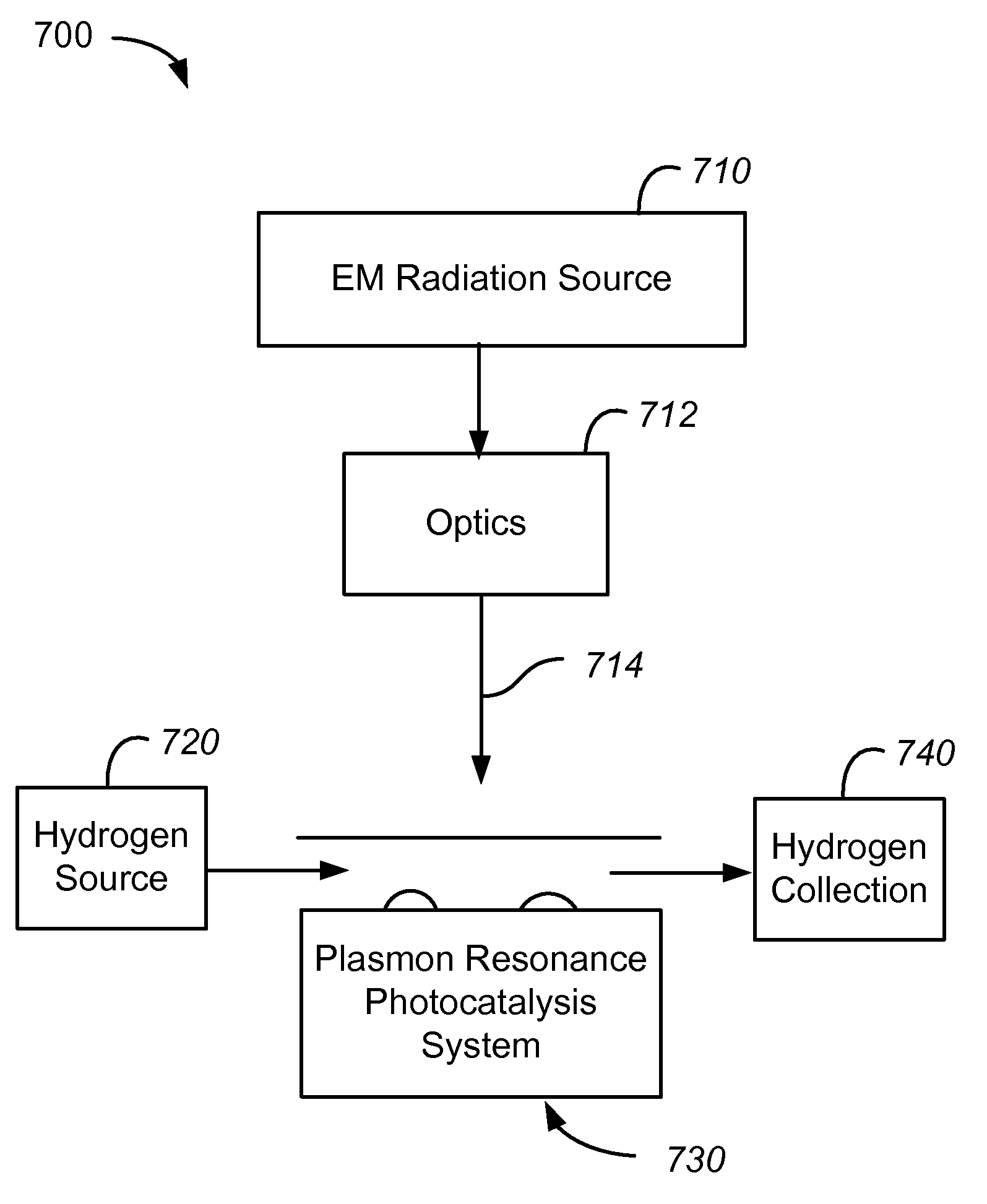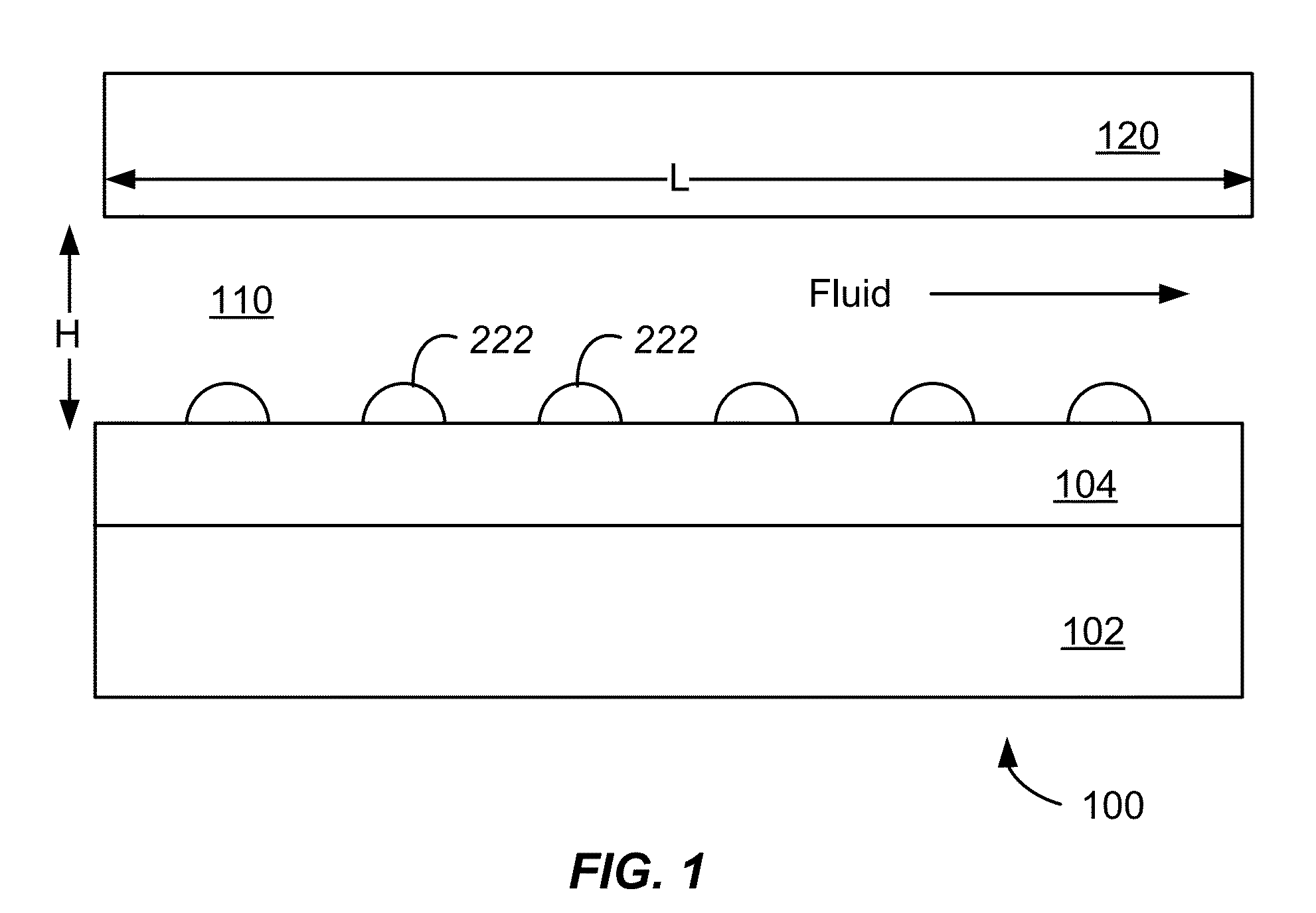Method and system for splitting water with visible light
a technology of visible light and water, applied in chemical/physical/physical-chemical processes, hydrogen isotopes, energy-based chemical/physical/physical-chemical processes, etc., can solve the problems of limited if any materials that can meet both demands, process energy intensive, material stability, etc., and achieve the effect of long system li
- Summary
- Abstract
- Description
- Claims
- Application Information
AI Technical Summary
Benefits of technology
Problems solved by technology
Method used
Image
Examples
Embodiment Construction
[0018]Embodiments of the present invention relate to methods and systems for photocatalysis of water. More particularly, embodiments of the present invention relate to the use of optical excitations in metal nanoparticles coupled to a reducible metal oxide to perform photocatalysis of water. The methods and techniques can be applied to a variety of materials, applications, and fields.
[0019]Embodiments of the present invention utilize plasmon-induced photoelectrochemistry catalysis to provide a low cost artificial photosynthesis system that can generate hydrogen fuel directly from water, while using visible light and a low cost (i.e., earth abundant) catalyst that does not substantially degrade. As an example, plasmon mediated photosynthesis is used to generate hydrogen from water. As described below, a gold nanoparticle / ceria (Au / CeO2) catalyst is exposed to visible light in a process to generate hydrogen from water. In some implementations, the efficiency of hydrogen production inc...
PUM
| Property | Measurement | Unit |
|---|---|---|
| wavelength | aaaaa | aaaaa |
| wavelength | aaaaa | aaaaa |
| radius | aaaaa | aaaaa |
Abstract
Description
Claims
Application Information
 Login to View More
Login to View More - R&D
- Intellectual Property
- Life Sciences
- Materials
- Tech Scout
- Unparalleled Data Quality
- Higher Quality Content
- 60% Fewer Hallucinations
Browse by: Latest US Patents, China's latest patents, Technical Efficacy Thesaurus, Application Domain, Technology Topic, Popular Technical Reports.
© 2025 PatSnap. All rights reserved.Legal|Privacy policy|Modern Slavery Act Transparency Statement|Sitemap|About US| Contact US: help@patsnap.com



